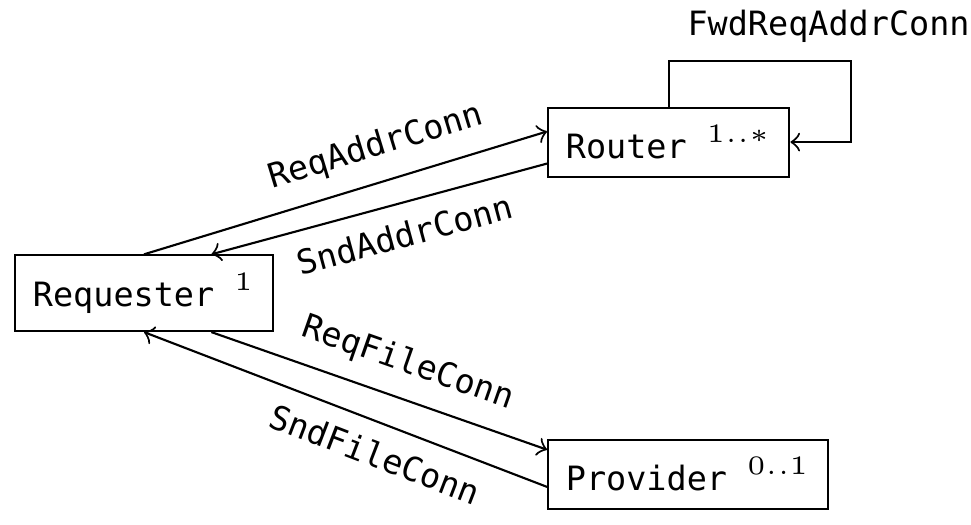Design of ensembles with the most beautiful woman in the world
The vision of autonomic computing drives the development of cutting-edge software systems. We no longer want to create systems which are thoroughly administrated by hand. Once employed, the system should rather manage itself, keep itself alive and running. At the same time, ubiquitous computing and global interconnectedness introduce more and more nodes into our systems. They become highly distributed and need to operate in diverse and changing environments. Those systems challenge us to think of designs for autonomic systems with large numbers of possibly heterogeneous nodes. They may collaborate in many concurrently running ensembles, each fulfilling its global goal despite unforeseen and changing conditions. Their complex interaction behavior needs to be designed carefully while at the same time it must be equipped with flexible mechanisms to dynamically adapt to evolving environments. Well-known techniques, like component-based software engineering, are not sufficient for modeling such systems, but must be augmented with other features that allow to focus on the particular characteristic of ensembles.
In the HELENA approach [1], we propose a modeling technique for ensembles centered around the notion of roles. Ensembles are built on top of a component-based platform as goal-oriented communication groups of components. The functionality of each group is described in terms of roles which a component may dynamically adopt. Therefore, components can freely join and leave ensembles without breaking the overall functionality of the collaboration as long as another component takes over the abandoned role. Components also dynamically adapt to new situations by changing their roles or by concurrently playing several roles (maybe in different ensembles) at the same time. Hence, the conceptual key point of HELENA is that in a system several ensembles can be established in parallel with each participating component playing (possibly) different roles in different collaborations at the same time.
The following figure shows such an ensemble in graphical notation. The underlying component-based platform is a peer-to-peer network storing files where this ensemble is dynamically formed to retrieve a file from the network. To perform this task, we envision three roles: requester, router, and provider. The requester wants to download the file. First it needs to request the address of the peer storing the file from the network, while using the routers as forwarding peers of its request. Once the requester knows the address, it directly requests the file from the provider for download. Each role can be adopted by peer component instances, but offers different capabilities to take over responsibility for the transfer task, e.g. the request must be able to request the address of the provider from a router while the router must be able to receive the request.

An important characteristic of ensemble-based systems is that components are aware of their environment and adapt their behavior accordingly. HELENA is well suited to conceptualize an adequate architecture for such systems. We require each component to adopt a distinctive role which is responsible for monitoring the environment and making the component aware of significant changes. By changing old roles into new ones the component can adaptively react to these observations.
HELENA allows rigorous ensemble modeling based on a solid formal foundation. We define the architecture of communication groups as ensemble structures composed of roles and role connectors and enhance them to ensemble specifications by adding role behaviors. The formal semantics of an ensemble specification introduces an execution model which is given by an ensemble automaton. The states of an ensemble automaton describe which role instances currently exist and which component instances currently adopt which roles. An ensemble evolves over time by message exchange between collaborating roles or by performing management operations like creating new role instance.
For the execution of ensemble-based systems, we provide the Java framework jHELENA [2] which transfers the role concept to object-oriented programming and follows the rigorous semantics of HELENA models. HELENA models can be described either graphically in a UML-like notation or in a domain-specific language fully integrated into the Eclipse Development Environment [3]. A code generator transforms those models to jHELENA code for execution.
Annabelle Klarl
LMU
[1] Rolf Hennicker, Annabelle Klarl. Foundations of Ensemble Modeling - The Helena Approach. Specification, Algebra, and Software. 8373, 2014, Vol. Lecture Notes in Computer Science, pp. 359-381.
[2] Annabelle Klarl, Rolf Hennicker. Design and Implementation of Dynamically Evolving Ensembles with the Helena Framework. [ed.] IEEE. Proceedings of the 23rd Australasian Software Engineering Conference. 2014, pp. 15-24.
[3] Annabelle Klarl, Lucia Cichella, and Rolf Hennicker. From Helena Ensemble Specifications to Executable Code. International Symposium on Formal Aspects of Component Software. Lecture Notes of Computer Science. to appear 2014.